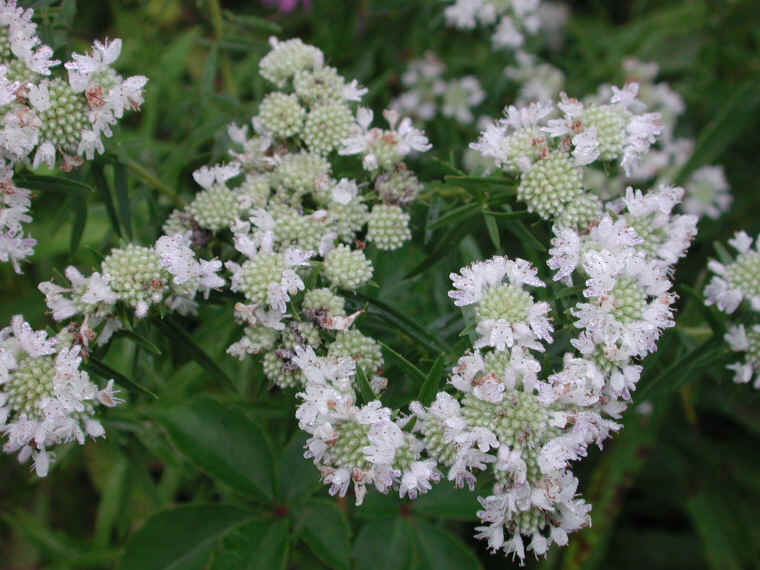
Flowers: Flower Color: Purple/Lavender White Flower Inflorescence: Solitary Flower Value To Gardener: Long Bloom Season Showy Flower Bloom Time: Fall Summer Flower Shape: Lipped Flower Size: Fruit: Fruit Color: Brown/Copper Display/Harvest Time: Fall Fruit Length:
#Pycnanthemum virginianum full
Cultural Conditions: Light: Full sun (6 or more hours of direct sunlight a day) Partial Shade (Direct sunlight only part of the day, 2-6 hours) Soil Texture: Clay Loam (Silt) Soil pH: Acid (8.0) Neutral (6.0-8.0) Soil Drainage: Good Drainage Moist Occasionally Dry Available Space To Plant: 12 inches-3 feet NC Region: Coastal Mountains Piedmont USDA Plant Hardiness Zone: 4a, 4b, 5a, 5b, 6a, 6b, 7a, 7b, 8a, 8b.Whole Plant Traits: Plant Type: Ground Cover Herbaceous Perennial Perennial Woody Plant Leaf Characteristics: Deciduous Habit/Form: Clumping Growth Rate: Medium Maintenance: Low Texture: Medium.Play Value: Attracts Pollinators Easy to Grow Fragrance Wildlife Larval Host Attributes: Genus: Pycnanthemum Species: verticillatum Family: Lamiaceae Life Cycle: Perennial Recommended Propagation Strategy: Seed Country Or Region Of Origin: Eastern USA Distribution: AR, CT, DE, IA, IL, IN, KS, KY, MA, MD, ME, MI, MO, MS, NE, NJ, NY, OH, OK, PA, RI, TN, VT, WV Wildlife Value: Many varieties of bees are attracted to the flowers.Tags: #fragrant #deciduous #drought tolerant #fragrant leaves #wasps #wetlands #erosion control #herbaceous #deer resistant #bushy #herbaceous perennials #groundcover #naturalizes #hairy leaves #cutting garden #naturalized area #dried arrangements #poor soils tolerant #hairy stems #bird friendly #dry soils tolerant #fly friendly #butterfly friendly #beetle friendly #bee friendly #moth friendly See this plant in the following landscape: Cultivars / Varieties: Insects, Diseases, and Other Plant Problems: The leaves may suffer from rust stress occurs from transplanting or adverse weather conditions. Its spreading by rhizomes can be kept in bay by cutting back the roots in the spring. When dried, it makes an excellent potpourri. The leaves will emit its minty fragrance when brushed against or crushed. Has very densely hairy leaves and stems, giving it a fuzzy texture. Grow in full sun to part shade with protection from hot summer sun. It is native to the middle United States, where its natural habitat includes rocky slopes, outcrops, along railroad tracks, open woods, stream valleys and thickets. Its common names are derived from the mint fragrance emitted from the leaves. Gray ex A.American mountain mint or hairy mountain mint is an herbaceous perennial in the Lamiaceae (mint) family. Monarda humilis (Torr.) Prather & J.A.Lavandula X intermedia Emeric ex Loisel.




Acanthomintha duttonii (Abrams) Jokerst.


 0 kommentar(er)
0 kommentar(er)
